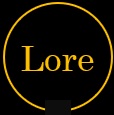Ankou is a prominent figure in the folklore of Brittany and Cornwall, recognized as a spectral harbinger associated with death and the afterlife. Often depicted as a gaunt or skeletal being cloaked in black, Ankou is said to guide a rickety cart or ride a pitch-black horse through moonlit roads, collecting the souls of the departed. In Brittany, he is known as the King of the Dead or the servant who never stops. In Cornwall, legends describe him wandering the countryside, his presence signifying imminent death or tragedy. Regardless of the variant, Ankou shares a core identity: he is an unearthly figure neither wholly malevolent nor compassionate, bound by a singular duty to gather souls as they pass into the next world. Many stories portray him with a scythe, a timeless symbol of the reaper. This iconography has evolved alongside Christian and pagan traditions, underscoring how multiple belief systems intertwine in Celtic regions where older legends still hold sway.
One of the most captivating aspects of Ankou’s legend is how he has come to represent inevitability. Rather than appearing as a fearsome villain, he is often seen as a necessary part of life’s cycle, carrying out his grim responsibility with neither remorse nor pity. In some tales, Ankou is the first to die during the year in a particular parish, his spirit condemned to perform the role for the following year. This cyclical appointment underscores the collective cultural respect for death: it is not an external force to be resisted but an integral thread in the fabric of existence. Before modern medicine and social safety nets, communities often faced high mortality rates, making the figure of Ankou a haunting yet accepted reality. People told stories of hearing the creak of his cart wheels late at night, sensing his presence as a cautionary reminder that any life might be claimed at a moment’s notice.
Breton oral tradition is especially rich with anecdotes of individuals encountering Ankou. Whether hearing phantom hoofbeats, glimpsing a dark silhouette in the corner of a field, or experiencing an unexplained chill, believers interpret such phenomena as evidence of his restless patrols. Folktales sometimes depict him offering cryptic warnings to those who cross his path, highlighting his role not only as collector but as prophet. While the prospect of encountering Ankou is frightening, the stories also impart moral lessons about humility and compassion. Failing to show respect to the dead or taking life for granted could provoke Ankou’s ire, resulting in swift punishment or dire misfortune. As such, Ankou’s legend provides a social framework: it encourages communal respect for both the living and the deceased, urging people to remember that life is fragile and fleeting.
In modern times, Ankou has been woven into broader pop culture as a grim reaper archetype who transcends purely Breton and Cornish roots. Authors, filmmakers, and artists occasionally invoke his image to evoke a sense of timeless dread or ancient mystique. However, despite modern re-interpretations, the traditional stories preserve a more nuanced view of Ankou: he is neither wholly good nor evil, but an essential force of nature. Much like the cyclical nature of the seasons, Ankou’s persistent journey from place to place serves as a reminder of human mortality and the shared fate that unites all people. Though he lingers in the shadows of Europe’s Atlantic coasts, the themes he represents—inevitability, duty, and the delicate balance of life and death—have universal resonance. For that reason, Ankou’s legend persists as a compelling part of Celtic folklore, inviting us to reflect on our own vulnerability and the stories we pass on to keep our fears and hopes alive.
